Inside Nikon’s Hikari Glass factory
Located about 375 miles north of Tokyo in the Akita Prefecture, the Hikari Glass factory is a special place. Opened back in the 1970s, Hikari Glass has been a wholly owned subsidiary of Nikon since 2004. If you shoot with Nikon lenses, the chances are good that they started life right here – as raw powdered glass.
 |
| The Akita Prefecture, home of Hikari Glass, lies around 375 miles north of Tokyo. |
Nikon invited us to visit Hikari Glass following the CP+ 2018 show in Yokohama, and along with our friends Dave Etchells and William Brawley of Imaging Resource, we were among the first journalists ever allowed inside the facility. During our visit we saw virtually the entire process of glass-making, from raw powder to finished glass ‘blanks’, ready for shaping and polishing in Nikon’s other facilities.
Click through this slideshow for a detailed look – please note that some areas of certain images are blurred at Nikon’s request.
Inside Nikon’s Hikari Glass factory
Akita and the surrounding area is blanketed with snow for several months a year. We visited on a relatively mild day, but as you can probably tell from the ice buildup on this building, ‘mild’ is a relative term.
Our tour guide, Akio Arai is the Corporate Vice President and Production General Manager of the Akita factory and has been with the company for 11 years. At present, almost all of the Hikari factory’s output goes to satisfying Nikon’s requirements for high-quality glass, but Mr Arai hopes that in future his facility will be in a position to supply even more glass to companies other than Nikon.
Inside Nikon’s Hikari Glass factory
This powder contains several different ingredients (the biggest portion being quartz, but the exact mix is secret) which are mixed, melted, and eventually turned into finished glass.
The combining of the raw material happens in batches of around 500kg (~1100 lb) in a pair of very large mixers. The precision achieved in the mixing process is somewhere in the region of 1 part to 50,000. It’s vitally important that the mixture is exactly right, because Hikari is aiming for glass with a very specific refractive index.
Inside Nikon’s Hikari Glass factory
This tub of powder (roughly the size of a small hotel bathtub) is the raw material for Nikon’s famed ED glass, used in a great many of the company’s high-performance lenses. Hikari makes 125 different kinds of optical glass, including 20 types of ‘specialty glass’ for molded lens elements.
Once the powder has been mixed, it is melted. There are two types of melting process, depending on the types of glass. The simpler of the two is called ‘direct melting’, and the more complex is called ‘pre-melting’ and ‘fine melting’. We watched the latter.
Inside Nikon’s Hikari Glass factory
The pre-melting process begins with the raw powder being heated inside a quartz or platinum crucible (depending on the exact type of glass), in a furnace at a temperature of more than 1000 degrees Celsius. The furnaces are on platforms raised several feet above the factory floor. The mixture is added to the crucibles by machines very gradually. If all the powder were dumped in at once, only the surface of the mixture would melt.
With quartz crucibles, some of the quartz inevitably melts into the mixture. This is accounted for in the formula, but since they become thinner over time as the quartz melts, the crucibles have a limited lifespan – in some cases, this can be as short as two days. We weren’t allowed to show the crucibles in this article, but the ones we were shown were roughly the size of a small domestic water boiler.
Once the glass is fully melted, a hole is opened into the bottom of the crucible to allow the molten glass to escape into a large tank of water, positioned underneath the furnace at floor level. That’s what you can see in the image above.
Inside Nikon’s Hikari Glass factory
As the glass continues to drain, eventually the water that it’s draining into becomes so hot that it starts to boil.
The remainder of the heated glass is drained into the tank, and once everything is cooled down, workers will assess whether or not the crucible in the furnace can be used again, or needs to be retired. In the old days, glass used to be melted in clay crucibles, and for every 2,500 kilos of glass, only about 500 kilos was usable. The modern method is far less wasteful.
A small water jet to the right of the stream of molten glass helps break the stream up into small droplets which cool to form what are called ‘frit’.
Inside Nikon’s Hikari Glass factory
And here is the frit – they look like little flakes of snow, but that’s where the similarity ends. In the pre-melting process, the frit aren’t meant to have exactly the exact refractive qualities of the finished glass – it’s still basically a raw material. And there’s some variation in the flakes of frit, too. Depending on where the glass was positioned inside the crucible, the makeup of each frit might be slightly different (i.e., it might contain more or less quartz, thanks to the melting of the crucibles during the process).
Inside Nikon’s Hikari Glass factory
The frit is mixed in these giant machines (it’s hard to get a sense of scale, but the fan on the far right is basically just a domestic room fan if that helps). If these look like modified and repurposed cement mixers, that’s because they are.
One of the major modifications over a standard cement mixer is inside the drums, which are lined with natural rubber to prevent any metal particles from the mixer contaminating the glass.
Inside Nikon’s Hikari Glass factory
Here’s a closer view of the rubberized interior of the mixing drum. Any rubber particles that make it into the mix will burn off harmlessly in the next major process – ‘fine melting’.
In order to hit exactly the right target refractive index for a particular kind of glass, Hikari prepares two batches of frit, one batch with a refractive index deliberately on one side of the target value, and one with a refractive index on the other. The two batches are then remixed and fine-melted together in just the right way to produce glass with the exact target refractive index value.
The direct melting process skips this pre-melting step, making it less time-consuming. The difficult part is that the glass must have exactly the right refractive index from the get-go, which requires absolute purity of the raw materials, and gives much less margin for fine-tuning.
Inside Nikon’s Hikari Glass factory
The fine melting process is one of the two most critical stages in the entire glass-making process, and takes place in platinum crucibles inside very high-tech furnaces. The exact details of the fine melting furnaces (even their external appearance) are highly protected by Hikari Glass, and we weren’t allowed to take photographs of them.
That’s OK, because to the untrained eye they don’t look like much anyway. More interesting is what they produce – long, long bars of glass, called ingots, which roll out from the machines very, very slowly on a very, very long conveyor belt in a process called ‘casting’.
Inside Nikon’s Hikari Glass factory
A skilled worker marks and precisely breaks the cast ingot at specific intervals. This particular ingot is destined for use in Nikon lenses, while glass for prisms and other purposes are processed in a different building.
Inside Nikon’s Hikari Glass factory
Once the ingot has been broken up into bars, each bar undergoes a quick inspection for any obvious major flaws or defects. If there is an apparent defect, these extruded glass bars are either recycled, if possible, or rejected.
Inside Nikon’s Hikari Glass factory
The glass bars are further checked for any bubbles or unevenness in an adjoining room. This is most often done visually, using a lightbox. Bubbles show up as bright specs, and ‘distortions’ (areas of substantially different refractive index) show up as wrinkles in the image projected onto the screen (left).
Inside Nikon’s Hikari Glass factory
Here, a worker points out a defect in a demonstration bar of glass.
During the decades that Hikari Glass has been operating, optical technology has changed a lot, and so has the legislation governing substances like lead and arsenic, which used to be commonly used in glass manufacturing. Over the years, Hikari Glass has refined its processes accordingly.
Inside Nikon’s Hikari Glass factory
To ascertain the exact refractive qualities of a piece of glass, Hikari Glass technicians turn to machines. To measure refractive index, a small test block of glass is cut, and a special liquid with the expected refractive index is then painted onto the glass. Technicians then load the painted cube of glass into this machine and look for variations in light transmission as light is shone through.
As well as the ‘final’ glass cast from the fine-melting furnaces, these machines are used to establish the refractive index of test batches of glass made from the frit we saw earlier.
Inside Nikon’s Hikari Glass factory
Once they’ve passed this quality control step, the bars of glass are split into slim rods, using heat. A heating coil warms the bar, and after a predetermined period of time, a small drop of cold water applied to the end of the bar causes it to split neatly in two with a very satisfying “pink” sound.
This bar has just been split into two rods – the bars to the right, in the background are awaiting their turn.
Inside Nikon’s Hikari Glass factory
The glass rods are then cut into smaller…
Inside Nikon’s Hikari Glass factory
…and smaller cubes, called ‘dice’ using a circular saw. You’ll notice there’s no glass dust anywhere to be seen in these images and that’s because the ‘saw’ doesn’t have a cutting surface (you could put your hand right on it, without any fear of injury). It works by friction – the spinning disc heats the glass at the point of contact, creating a clean break.
Each cube is slightly bigger than it ultimately needs to be, so that there’s scope for its weight to be precisely adjusted in the next stage of the process – grinding.
Inside Nikon’s Hikari Glass factory
The cubes of glass are weighed and placed into four categories, according to their approximate target weight. Their weight is then adjusted by grinding stones, in a very noisy machine called a tumbler (pictured above, and there’s a video of it in operation, below).
The cubes of glass that are heaviest are added to the tumbler first, followed by the second-heaviest cubes, then the third and finally the fourth. In this way, the cubes of glass that need most weight shaved from them are processed for longer, and they all come out weighing roughly the same.
Inside Nikon’s Hikari Glass factory
After hanging out in the tumbler for a while, the cubes look like pieces of beach glass.
A skilled employee then inspects each one by hand and performs any necessary additional grinding to make sure that any small chips are smoothed out, and the weight falls within the desired parameters.
This particular piece has a chip (marked in red), which is big enough that unfortunately it’s reached the end of the line and will be rejected.
Inside Nikon’s Hikari Glass factory
Several areas of the Hikari factory are dusted with white powder, but it isn’t glass dust, it’s boron nitride – a heat-resistant compound of boron and nitrogen which is used in several industries, including cosmetics. At the Hikari factory, it’s used to stop the cakes of glass from sticking to their casts when they’re pressed into shape.
A welcome effect of the roughening of the glass surface in the tumblers is that it makes the boron nitride adhere more effectively.
Inside Nikon’s Hikari Glass factory
And now the pressing begins!
The blocks of glass, covered in boron nitride, are placed into their ceramic trays and sent on a conveyer belt through a furnace – which not coincidentally, makes this area one of the warmer sections of the Hikari facility. The aim is to soften the glass, but not quite to melting point.
Inside Nikon’s Hikari Glass factory
The very, very hot piece of glass is moved by hand (well, by tongs) and tipped into a heated mold. The molds for lens elements like these are pretty simple, but we’re told that it takes much longer to prepare the molds for glass destined for DSLR and binocular prisms.
Inside Nikon’s Hikari Glass factory
Once the glass is in the mold, a worker then activates a foot pedal to press the cake of glass into shape. A clock serves as a rough point of reference for the length of time each cake of glass is pressed, but an experienced press operator can also make this call by assessing the hardness of the glass based on how the mold feels in his hands.
Inside Nikon’s Hikari Glass factory
After pressing, and cooling, the cakes of glass (which are now in their puck-shaped final form) are collected for inspection.
Inside Nikon’s Hikari Glass factory
Each cake of glass is inspected by hands for any obvious defects resulting from pressing.
This large piece of glass is destined for one of Nikon’s high-end telephoto lenses, and pieces like this go through extra inspection steps because they’re produced in a lower volume.
Inside Nikon’s Hikari Glass factory
Last but not least is the annealing process – the second most critical phase in the glass-making process, after fine melting. Like fine melting, the exact details of the annealing process are highly confidential. Essentially, annealing is a precisely-regulated heating and cooling process, which takes place over a long period of time – often several days. The goal is to make the internal density of the glass blanks completely consistent, and to eliminate any remaining bubbles and to adjust the refractive index. Generally speaking, lengthier cooling cycles result in denser glass with a higher refractive index, and shorter cycles produce less dense, higher RI glass.
The specific temperature brackets – and the period of time over which those temperatures are sustained – is critical (and secret) and depends on the exact type of glass. The huge plates of glass used in industrial steppers might spend up to two months in the annealing furnace.
The green chalkboard on the front of this furnace is used by workers to record the ‘recipe’ for the particular trays of glass blanks that have been loaded in. This furnace isn’t being used, which is why there’s nothing written on the board (and why we were allowed to take pictures of it).
Inside Nikon’s Hikari Glass factory
After all that, at long last, we have a finished ‘blank.’ These blanks are packaged and sent off to other Nikon facilities in Japan, China and Thailand for polishing and coating, before finally making their way into NIKKOR lenses.
Inside Nikon’s Hikari Glass factory
And that’s it! Here, finished blanks of glass are placed into plastic pallets ready for dispatch.
To recap, here are the major stages in the entire process from beginning to end, with links:
- Initial mixing of the raw materials to make glass powder LINK
- Pre-melting of the glass to make ‘frits’, which are intentionally created to have either a positive or negative R.I. (direct melting is a simpler process, that we did not observe) LINK
- Mixing the frits LINK
- Fine melting of the frits (not pictured) to achieve the target refractive index, and extrusion and cutting of the glass ingots into bars LINK
- Inspection of the glass for defects LINK
- Cutting into blocks into rods and dice LINK
- Adjusting the weight of the glass dice in the grinding machine LINK
- Heating and pressing the glass dice into molds LINK
- Annealing of the resulting blanks, to eliminate distortions in the glass and fine-tune the refractive index LINK
- Inspection and measurement of the finished glass blanks
We hope you enjoyed this look inside Nikon’s Hikari glass factory. If you’re eager to learn even more, our friend Dave Etchells over at Imaging Resource has published an even more detailed account of our visit here.
Articles: Digital Photography Review (dpreview.com)




















































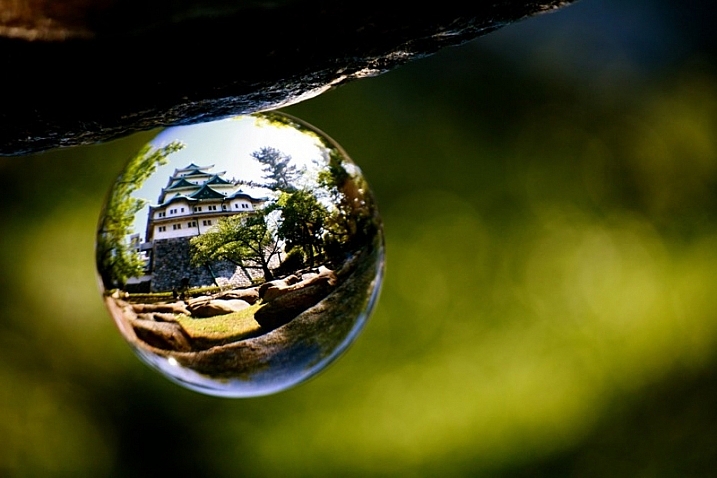

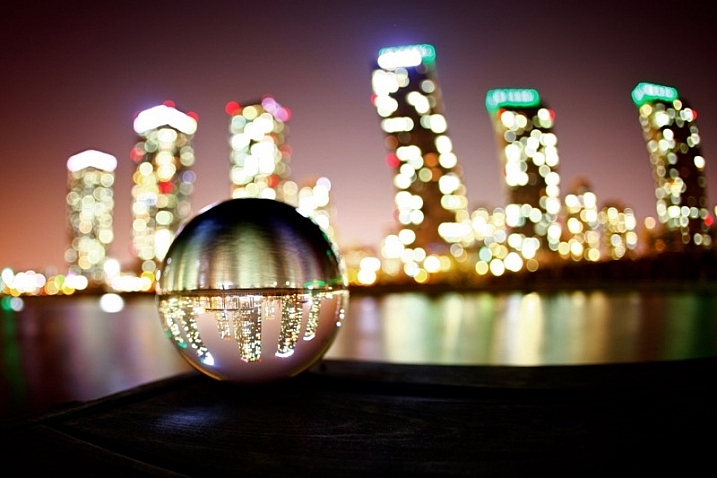
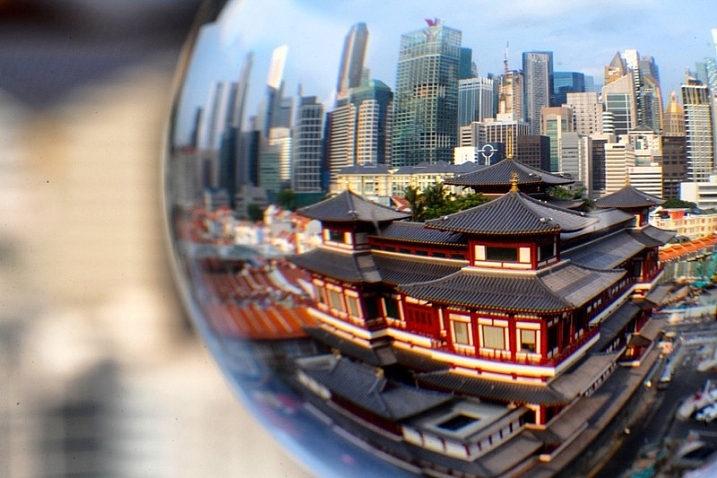


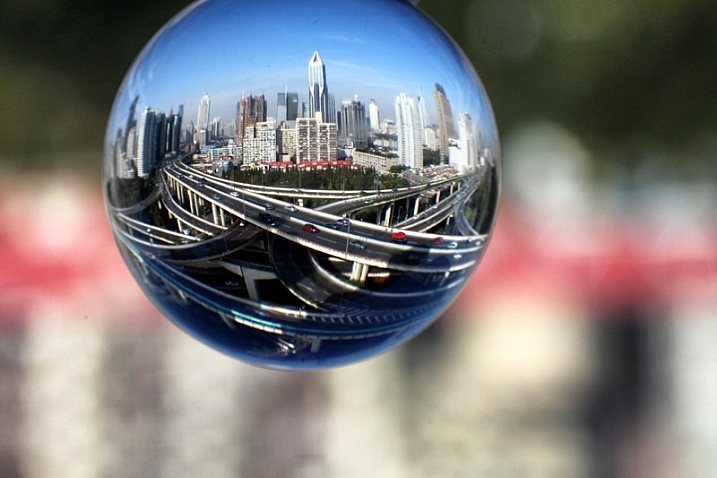

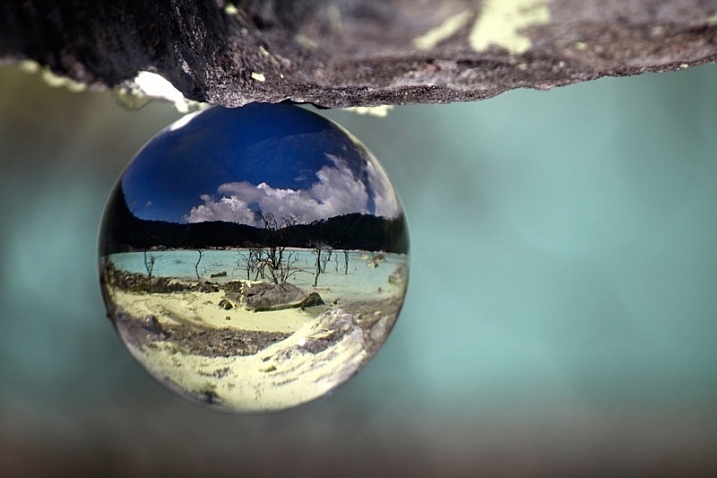



















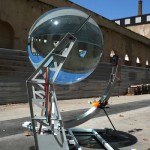
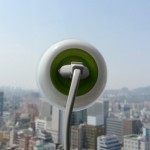
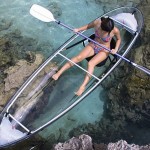




You must be logged in to post a comment.